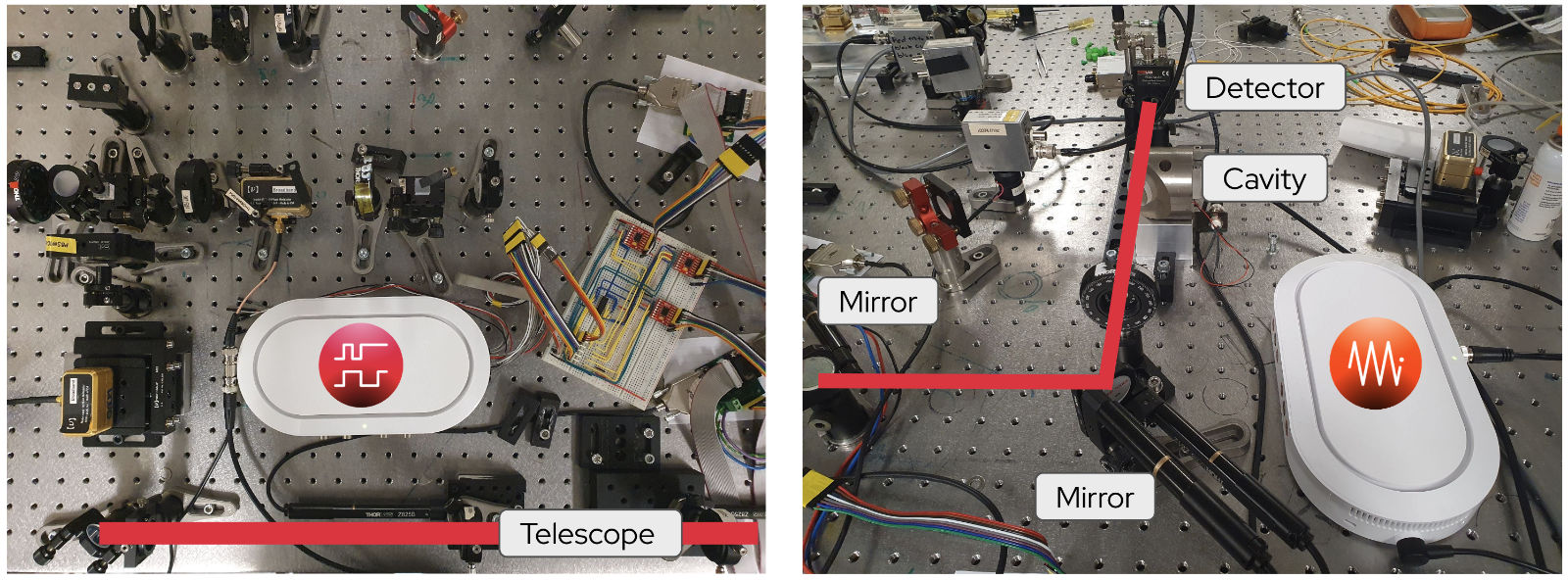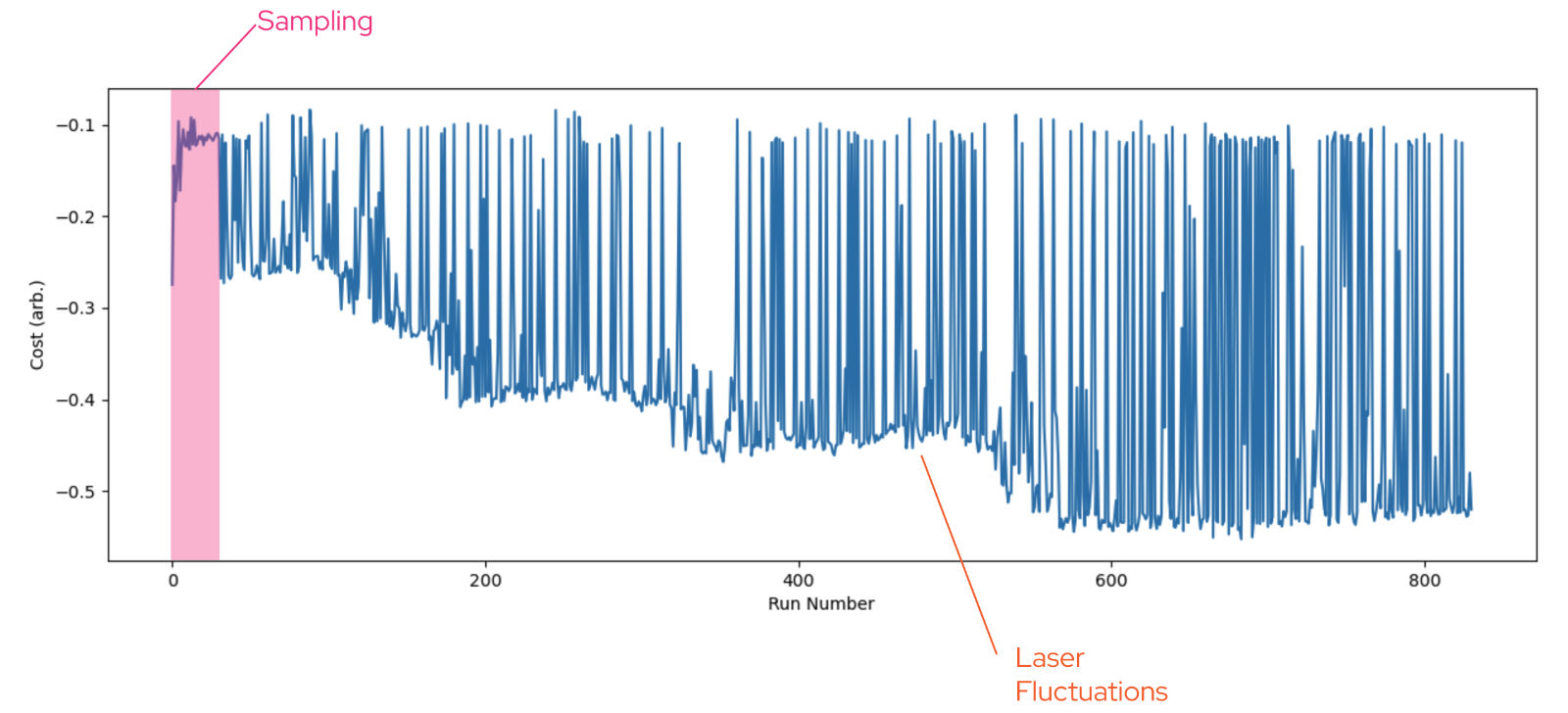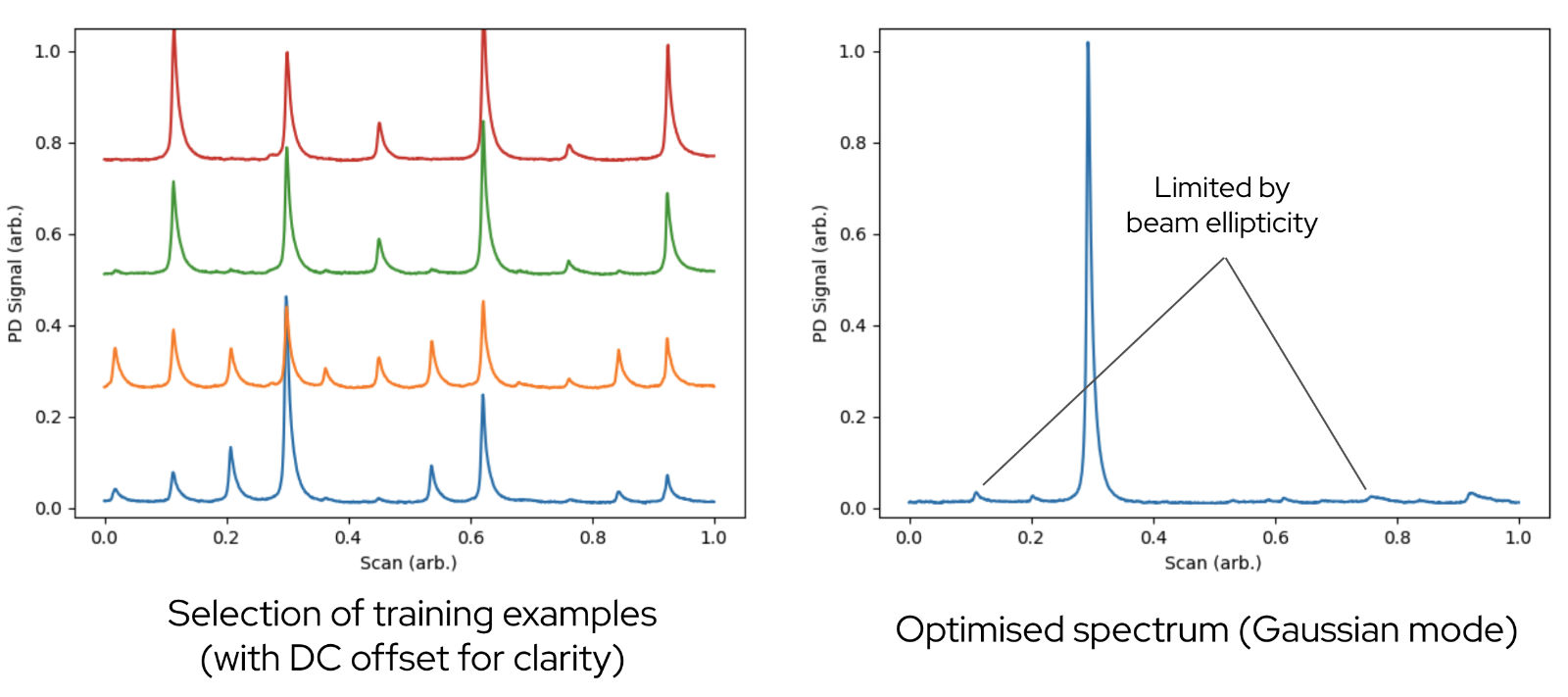Introduction
Optical ring cavities allow for incoming light to be filtered, transmitting only the selected modes of light. This is useful when thoroughly conditioned laser beams are required for applications such as optical interferometry and spectroscopy. Often the lowest order mode – the Gaussian mode – is chosen as the objective so that the resulting laser beam has a Gaussian profile. Successful alignment into an optical ring cavity requires precisely setting the position and size of the beam waist, and the horizontal and vertical position and tilt angles of the beam with respect to the incident interface (a mirror) of the cavity.
Floquet AI (a joint venture between ANU spin-out Aqacia and 2pi Software) has developed the Deep Learning Optimiser (DLO), a machine learning system designed for optimising quantum and complex systems. Typically such systems are costly to sample in either time or resources, and represent a high dimensionality problem domain. The group have leveraged the DLO’s cloud-based nature to integrate it with the Moku:Go (as developed by Liquid Instruments) and demonstrate the capabilities of this device to automatically align an optical ring cavity. Liquid Instruments’ Moku range of all-in-one lab technology devices are ideally suited to this role due to their versatility and automatability via their API.

Moku:Go at the heart of the Optical Cavity circuit
Deep Learning Optimiser Capabilities
The Floquet Deep Learning Optimiser (DLO) uses a neural network ensemble and heuristic engine to cycle through a series of training and prediction sequences to establish a suitable control profile for a target system more quickly and accurately than may be possible using traditional human-based mechanisms.
Establishing suitable control settings for both laboratory and/or industrial equipment is a critical part of ensuring their ability to consistently function as intended. The DLO allows this to be completed in an highly-automated manner particularly in cases where :-
- The target system operates restrictively under a sparse sampling constraint
- It is monetarily expensive to acquire sample data
- The problem domain is of high dimensionality
- The target system operates in a cyclical manner and may be automatable
- Hard parameter bounds exist, precluding many traditional learning algorithms
More detailed information about the Floquet DLO is available in the Products section of this website – click here.
The Challenge
Traditionally, a physicist would have aligned a laser beam to an optical cavity manually. A rough alignment is often obtained by placing a detector in the path of the beam reflected off of the input window of the cavity. While observing the detected spectrum, the position and tilt of the incoming beam is adjusted with a pair of mode matching mirrors and the beam waist size and position with a pair of lenses. This continues until absorption dips can be seen on the detector signal. Now that the physicist is confident that some light is making it into the cavity, the detector is placed after the output window of the cavity where it can detect light which is transmitted through the cavity. The mirrors and lenses are adjusted again, until the transmission spectrum forms a single peak at the desired mode.
The cavity alignment process can be lengthy, and for complex experiments involving several optical paths, must be repeated for each cavity. Additionally, the alignment will periodically have to be adjusted due to drift sources such as temperature fluctuations and mechanical perturbations. The DLO could readily optimise over the 6-dimensional state space posed by this problem, however, a control layer is required to translate the DLO’s software outputs into physical adjustments.
The Solution
Using the Moku:Go Logic Analyzer as the driver for actuators attached to the steering mirrors, and the Oscilloscope for scanning the cavity and recording the detector signal, Floquet has been able to automatically align a laser to an optical cavity. The Logic Analyzer takes a predicted setting from the DLO and generates pulse-trains to drive the actuators to their new positions. The Oscilloscope then takes a measurement of the detector signal for analysis by the DLO. This cycle repeats until the cavity has achieved maximum quality alignment.
The Results
Floquet were able to integrate the DLO with Moku’s hardware, enabling the automatic alignment of a laser beam to an optical cavity. As long as the target mode can be seen and identified in the initial, manual alignment, the system is capable of taking over and finding and maintaining a high quality alignment.
The automated, DLO-driven system was able to definitively outperform expert human operators in alignment speed for comparable or better alignment quality.
The graph below shows the measured cost function (intensity at the photo-detector) with increasing run number. The initial sampling can be seen as the brief plateau from runs 0-25. By 600 runs the DLO has optimised the optical cavity alignment to within the limit imposed by the ellipticity of the beam. This result was indicative of that over multiple optimisations, as there is some dependency on the quality of the random sampling at the beginning of each optimisation. Optimal alignments in as few as 300 runs were observed.

Snapshots of the photo-detector output are shown below (with a DC offset for visibility) for random mirror/lens configurations during the optimisation process. The figure on the right shows the spectrum in the final configuration determined by the DLO. As desired, almost all of the optical power has been transferred to the gaussian mode.

Conclusion
With the marriage of the Moku:GO and their own DLO, Floquet have created an auto-alignment system for optics which can be simply deployed in the lab, and proven the power of this combination of technologies to deliver advanced machine learning capability to physical systems.
Acknowledgement
Floquet wish to acknowledge the Canberra-based Liquid Instruments team for their support and collaborative effort in facilitating this successful product evaluation. More information on Liquid Instruments can be found here.